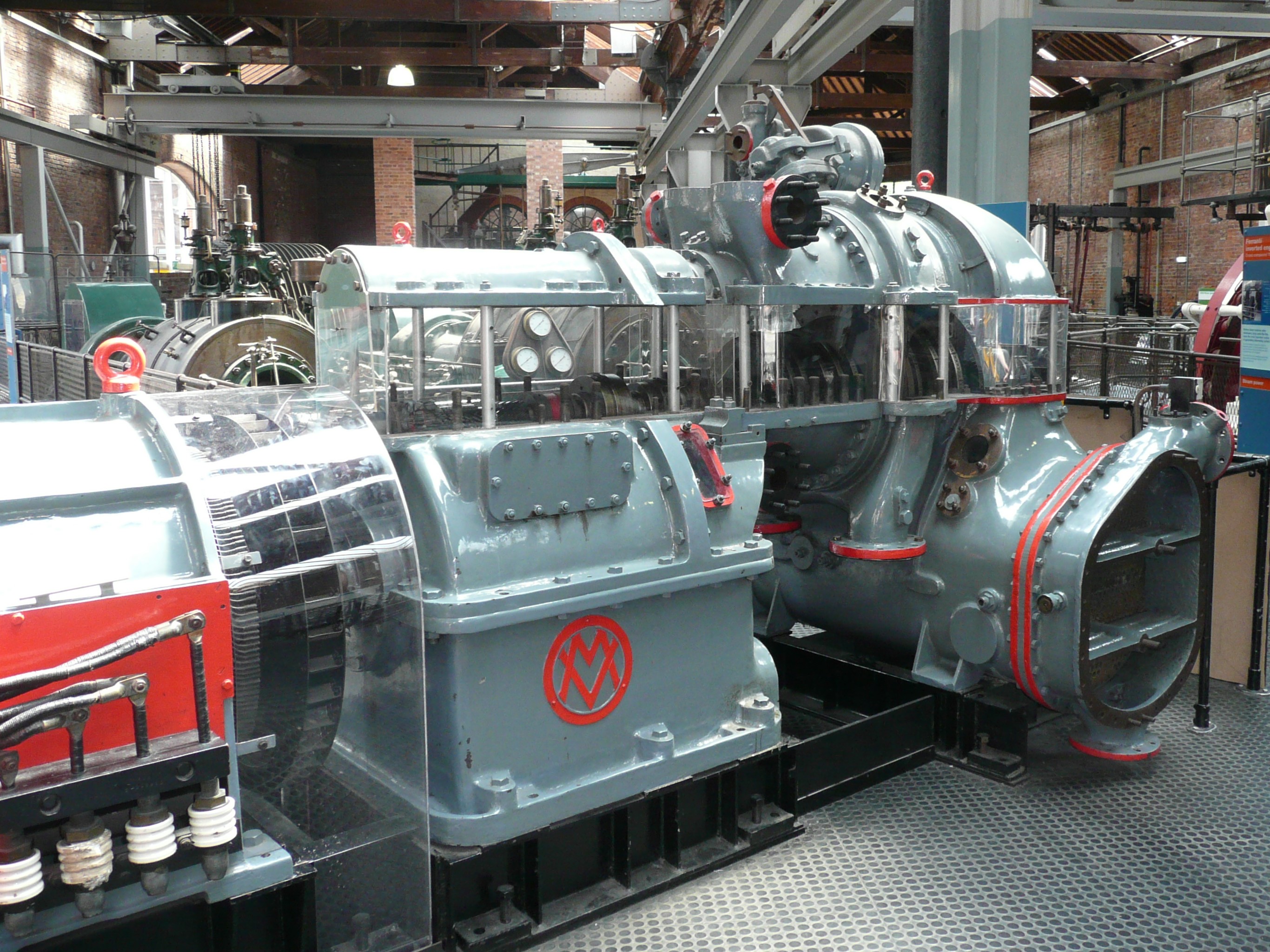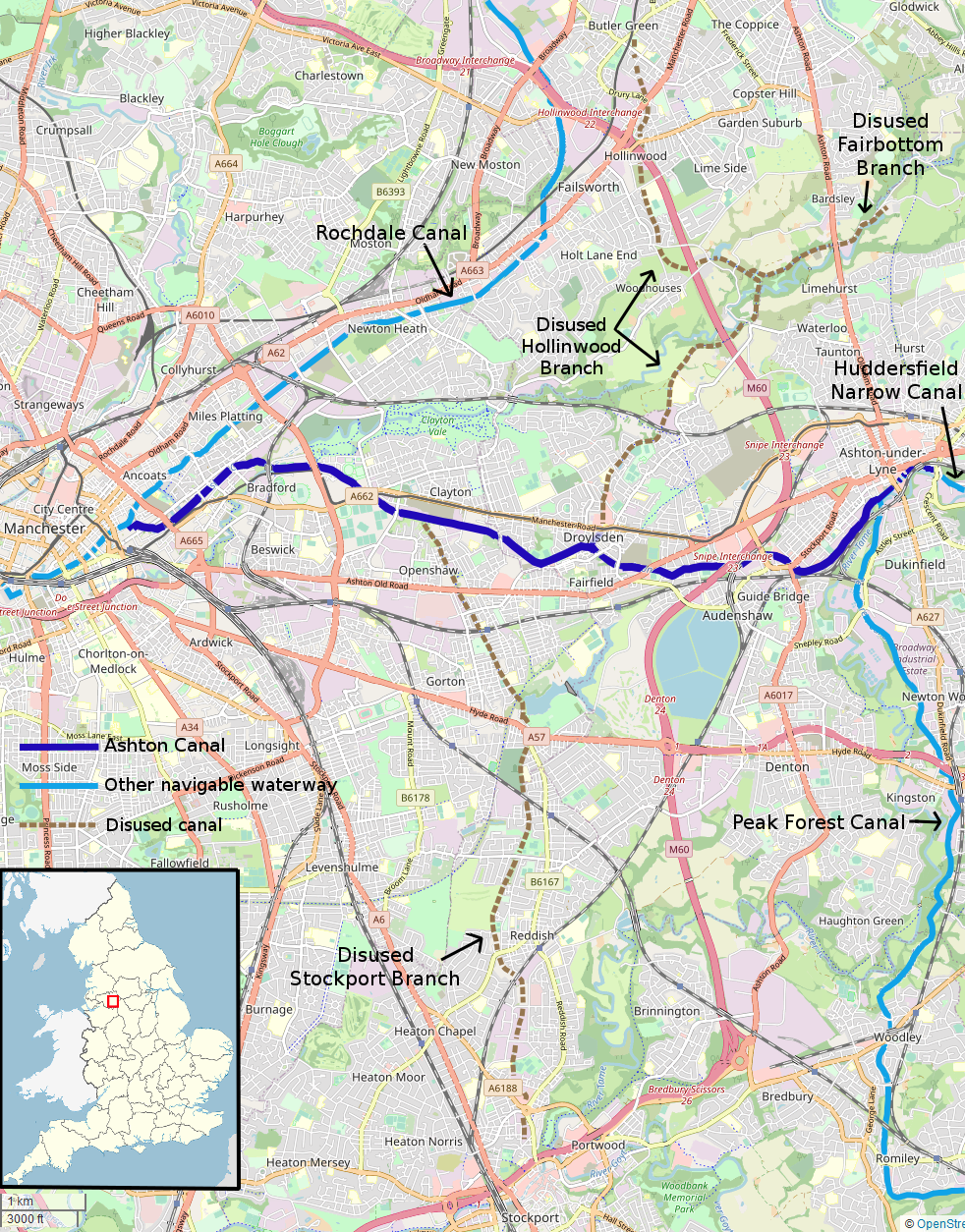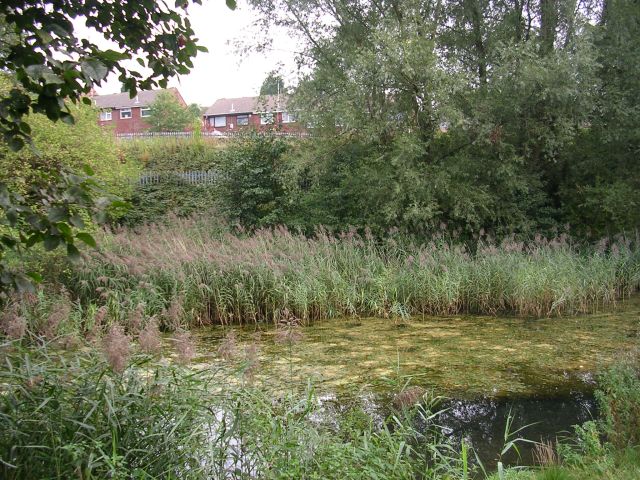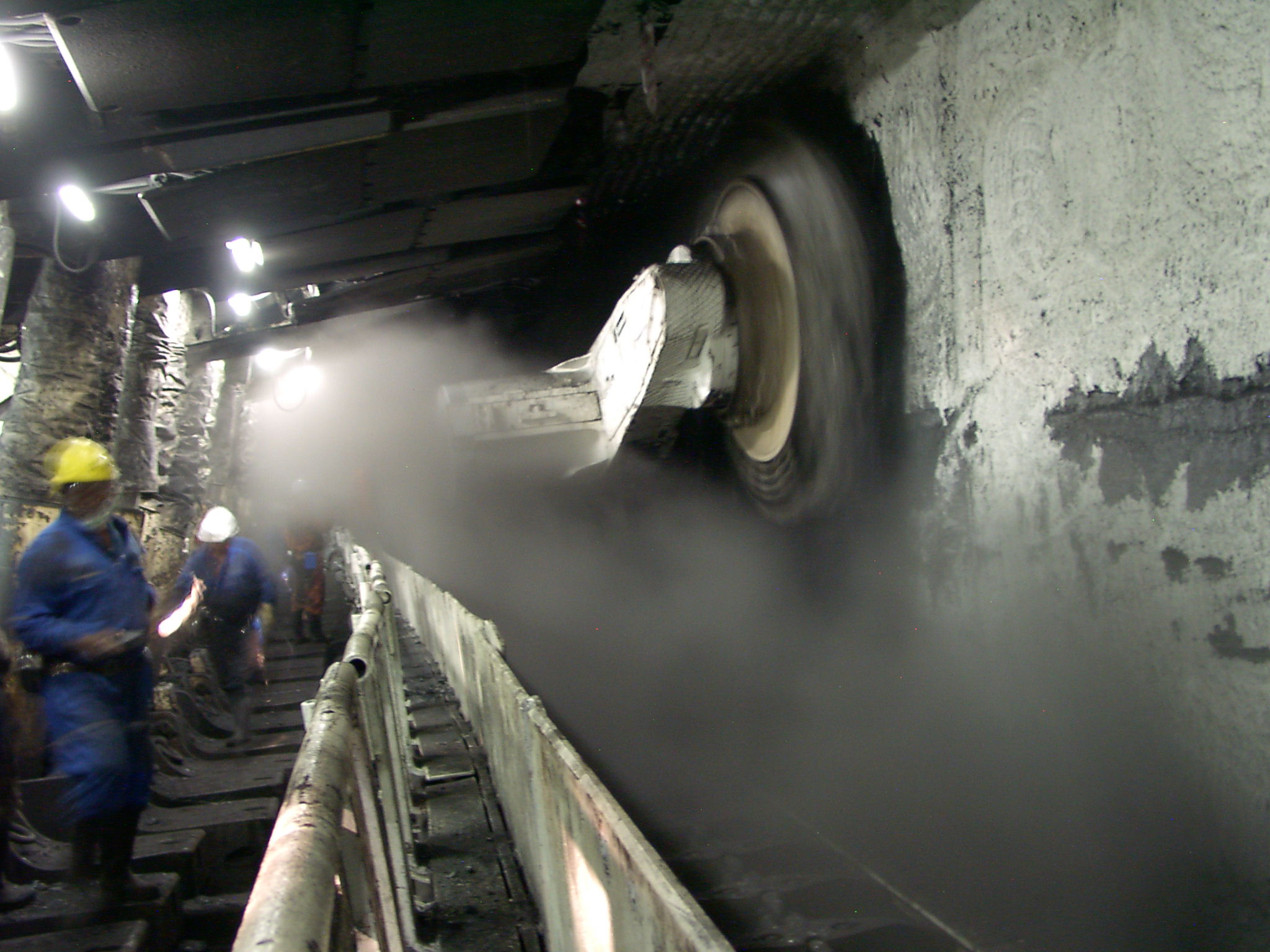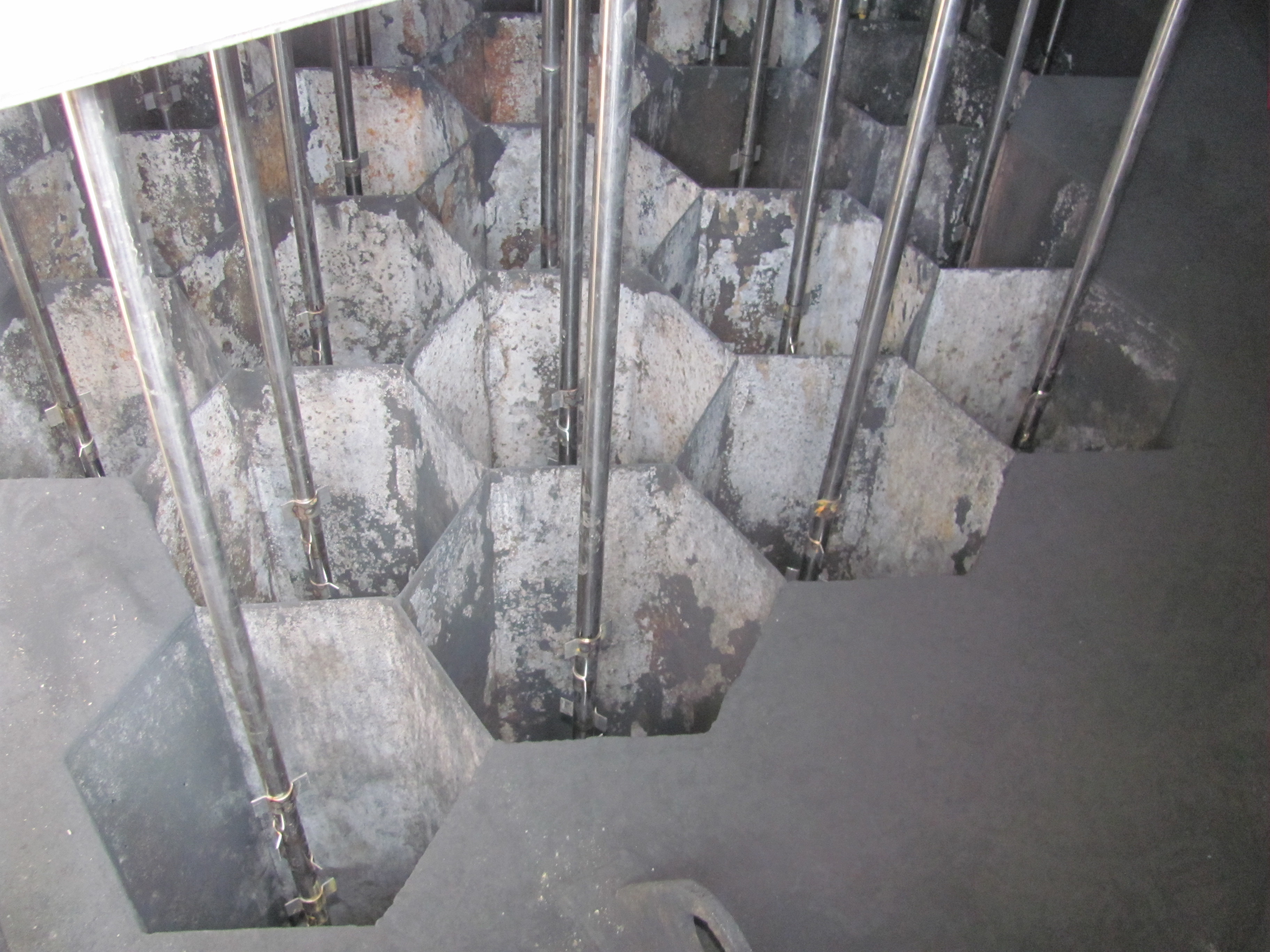|
Stuart Street Power Station
Stuart Street Power Station was a coal-fired power station in Bradford, Manchester, England. History The station was built in 1900, and equipped with six Yates and Thom, 2,500 hp steam engines, each engine driving an Electrical Co. Ltd, 1,500 kW, three-phase alternator, giving an output of 6,500V at 50 Hz. Babcock & Wilcox supplied 24 boilers fitted with mechanical stokers. In 1904, two Wallsend Slipway & Engineering Company, 6000 hp, marine triple-expansion steam engines were installed, each driving a 3,750 kW, 6,500V, three-phase flywheel alternator. Twelve extra boilers by Babcock & Wilcox were installed to drive the new engines. The plant's first turbine-driven generator was installed in 1907. In 1920, the power station was, with Liverpool Docks, a target for an IRA plot involving its destruction. The plot was foiled when documents were captured and published. In 1923 the generators at Stuart Street comprised 1 × 5,000 kW, 3 × 6,000 kW, 1 � ... [...More Info...] [...Related Items...] OR: [Wikipedia] [Google] [Baidu] |
England
England is a Countries of the United Kingdom, country that is part of the United Kingdom. It is located on the island of Great Britain, of which it covers about 62%, and List of islands of England, more than 100 smaller adjacent islands. It shares Anglo-Scottish border, a land border with Scotland to the north and England–Wales border, another land border with Wales to the west, and is otherwise surrounded by the North Sea to the east, the English Channel to the south, the Celtic Sea to the south-west, and the Irish Sea to the west. Continental Europe lies to the south-east, and Ireland to the west. At the 2021 United Kingdom census, 2021 census, the population was 56,490,048. London is both List of urban areas in the United Kingdom, the largest city and the Capital city, capital. The area now called England was first inhabited by modern humans during the Upper Paleolithic. It takes its name from the Angles (tribe), Angles, a Germanic peoples, Germanic tribe who settled du ... [...More Info...] [...Related Items...] OR: [Wikipedia] [Google] [Baidu] |
Metropolitan-Vickers
Metropolitan-Vickers, Metrovick, or Metrovicks, was a British heavy electrical engineering company of the early-to-mid 20th century formerly known as British Westinghouse. Highly diversified, it was particularly well known for its industrial electrical equipment such as Electrical generator, generators, steam turbines, switchgear, transformers, electronics and railway traction equipment. Metrovick holds a place in history as the builders of the first commercial transistor computer, the Metrovick 950, and the first British axial-flow jet engine, the Metropolitan-Vickers F.2. Its factory in Trafford Park, Manchester, was for most of the 20th century one of the biggest and most important heavy engineering facilities in Britain and the world. History Metrovick started as a way to separate the existing British Westinghouse, British Westinghouse Electrical and Manufacturing Company factories from United States control, which had proven to be a hindrance to gaining government cont ... [...More Info...] [...Related Items...] OR: [Wikipedia] [Google] [Baidu] |
Demolished Buildings And Structures In Manchester
Demolition (also known as razing and wrecking) is the science and engineering in safely and efficiently tearing down buildings and other artificial structures. Demolition contrasts with deconstruction, which involves taking a building apart while carefully preserving valuable elements for reuse purposes. For small buildings, such as houses, that are only two or three stories high, demolition is a rather simple process. The building is pulled down either manually or mechanically using large hydraulic equipment: elevated work platforms, cranes, excavators or bulldozers. Larger buildings may require the use of a wrecking ball, a heavy weight on a cable that is swung by a crane into the side of the buildings. Wrecking balls are especially effective against masonry, but are less easily controlled and often less efficient than other methods. Newer methods may use rotational hydraulic shears and silenced rockbreakers attached to excavators to cut or break through wood, steel, a ... [...More Info...] [...Related Items...] OR: [Wikipedia] [Google] [Baidu] |
History Of Manchester
The history of Manchester encompasses its change from a minor Township (England), township in Lancashire to an industrial metropolis in the United Kingdom and the world. * * * Manchester began expanding "at an astonishing rate" around the turn of the 19th century as part of a process of unplanned urbanisation brought on by a boom in textile manufacture during the Industrial Revolution. The transformation took little more than a century. Having evolved from a Roman castra, castrum in Celts, Celtic Britain, in the Victorian era Manchester was a major locus of the Industrial Revolution, and was the site of one of the world's first passenger railway stations as well as important scientific achievements. Manchester also led the political and economic reform of 19th-century Britain as the vanguard of free trade. The mid-20th century saw a decline in Manchester's industrial importance, prompting a depression in social and economic conditions. Subsequent investment, gentrification and ... [...More Info...] [...Related Items...] OR: [Wikipedia] [Google] [Baidu] |
Demolished Power Stations In The United Kingdom
Demolition (also known as razing and wrecking) is the science and engineering in safely and efficiently tearing down buildings and other artificial structures. Demolition contrasts with deconstruction, which involves taking a building apart while carefully preserving valuable elements for reuse purposes. For small buildings, such as houses, that are only two or three stories high, demolition is a rather simple process. The building is pulled down either manually or mechanically using large hydraulic equipment: elevated work platforms, cranes, excavators or bulldozers. Larger buildings may require the use of a wrecking ball, a heavy weight on a cable that is swung by a crane into the side of the buildings. Wrecking balls are especially effective against masonry, but are less easily controlled and often less efficient than other methods. Newer methods may use rotational hydraulic shears and silenced rockbreakers attached to excavators to cut or break through wood, steel, a ... [...More Info...] [...Related Items...] OR: [Wikipedia] [Google] [Baidu] |
Power Stations In North West England
Power may refer to: Common meanings * Power (physics), meaning "rate of doing work" ** Engine power, the power put out by an engine ** Electric power, a type of energy * Power (social and political), the ability to influence people or events Mathematics, science and technology Computing * IBM POWER (software), an IBM operating system enhancement package * IBM POWER architecture, a RISC instruction set architecture * Power ISA, a RISC instruction set architecture derived from PowerPC * IBM Power microprocessors, made by IBM, which implement those RISC architectures * Power.org, a predecessor to the OpenPOWER Foundation Mathematics * Exponentiation, "''x'' to the power of ''y''" * Power function * Power of a point * Statistical power Physics * Magnification, the factor by which an optical system enlarges an image * Optical power, the degree to which a lens converges or diverges light Social sciences and politics * Economic power, encompassing several concepts that economists use ... [...More Info...] [...Related Items...] OR: [Wikipedia] [Google] [Baidu] |
Coal-fired Power Stations In England
Coal is a combustible black or brownish-black sedimentary rock, formed as rock strata called coal seams. Coal is mostly carbon with variable amounts of other Chemical element, elements, chiefly hydrogen, sulfur, oxygen, and nitrogen. Coal is a type of fossil fuel, formed when dead plant matter decays into peat which is converted into coal by the heat and pressure of deep burial over millions of years. Vast deposits of coal originate in former wetlands called coal forests that covered much of the Earth's tropical land areas during the late Carboniferous (Pennsylvanian (geology), Pennsylvanian) and Permian times. Coal is used primarily as a fuel. While coal has been known and used for thousands of years, its usage was limited until the Industrial Revolution. With the invention of the steam engine, coal consumption increased. In 2020, coal supplied about a quarter of the world's primary energy and over a third of its Electricity generation, electricity. Some iron and steel-maki ... [...More Info...] [...Related Items...] OR: [Wikipedia] [Google] [Baidu] |
Ashton Canal
The Ashton Canal is a canal in Greater Manchester, England, linking Manchester with Ashton-under-Lyne in Tameside. Route The Ashton leaves the Rochdale Canal at Ducie St. Junction in central Manchester, and climbs for through 18 locks, passing through Ancoats, Holt Town, Bradford, Clayton, Openshaw, Droylsden, Fairfield and Audenshaw to make a head-on junction with the Huddersfield Narrow Canal (formerly the Huddersfield Canal) at Whitelands Basin in the centre of Ashton-under-Lyne. At Bradford, the canal passes very close to the City of Manchester Stadium (currently known as the Etihad Stadium for sponsorship reasons), which was originally built to host the 2002 Commonwealth Games. Apart from the Rochdale and Huddersfield Narrow canals, the Ashton Canal only currently connects with one other canal. Just short of Whitelands, at Dukinfield Junction/Portland Basin a short arm crosses the river Tame on the Tame Aqueduct, and makes a head-on junction with the Peak ... [...More Info...] [...Related Items...] OR: [Wikipedia] [Google] [Baidu] |
Manchester Velodrome
Manchester Velodrome is an indoor Olympic-standard cycle-racing track in Manchester, England, which opened in 1994. Part of the National Cycling Centre, the facility has been home to British Cycling since 1994, coinciding with the nation's rise to track cycling dominance at World and Olympic level. The velodrome was also home to UCI ProTour#List of current UCI ProTeams, UCI ProTeam Ineos Grenadiers, formerly known as Team Sky between 2010 and 2019, a period when the team won 6 Tour de France, 2 Vuelta a España and 1 Giro d'Italia with Great Britain riders. The Manchester Velodrome has been cited as the major catalyst for Britain's successes in track and road cycling and has been described by ''Cycling Weekly'' as the "beating heart of British Cycling’s ascension to the top of world cycling". For 18 years from opening, it was the only indoor Olympic-standard track in the United Kingdom before the completion of the Lee Valley VeloPark for the 2012 Summer Olympics. It is one of ... [...More Info...] [...Related Items...] OR: [Wikipedia] [Google] [Baidu] |
Clayton Vale
Clayton Vale is an area of green space in Clayton, Manchester, England, through which the River Medlock flows. Redeveloped in 1986, the land has a rich industrial and social history. Today the area is a natural habitat for wildlife and it has been designated a Local Nature Reserve. Natural history Fossils of plants and insects in the rocks of the area show a very different climate to what we see today. Swamp forests and luxuriant growth were encouraged by the warm moist air. At the start of the Triassic Period, Britain was largely covered by desert. The land sank producing a great salt lake over much of northern Britain, after which the desert conditions returned. Clayton Vale pre-1986 The Vale landscape was somewhat different before the late 1970s. The valley was home to many buildings from Bank Bridge Works and Tannery to The Smallpox Hospital. ;Bank Bridge Works and Tannery The chimney behind the Jewish Cemetery of Philips Park is all that remains of the once extensive ... [...More Info...] [...Related Items...] OR: [Wikipedia] [Google] [Baidu] |
Bradford Colliery
Bradford Colliery was a coal mine in Bradford, Manchester, England. Although part of the Manchester Coalfield, the seams of the Bradford Coalfield correspond more closely to those of the Oldham Coalfield. The Bradford Coalfield is crossed by a number of fault lines, principally the Bradford Fault, which was reactivated by mining activity in the mid-1960s. Coal had been mined at Bradford since at least the early 17th century, when the area around the pits was largely rural; it became increasingly built-up and industrialised as nearby Manchester expanded during the 19th century. Coal was transported from the colliery by canal and railway, but most was consumed locally by the adjacent Bradford Ironworks. In the mid-20th century a 469-yard (420 m) tunnel was dug to supply coal directly to the Stuart Street Power Station. Damage to buildings in the area around the colliery caused by subsidence led to it becoming uneconomic despite its sitting on large reserves of high-quality coal ... [...More Info...] [...Related Items...] OR: [Wikipedia] [Google] [Baidu] |
Electrostatic Precipitator
An electrostatic precipitator (ESP) is a filterless device that removes fine particles, such as dust and smoke, from a flowing gas using the force of an induced electrostatic charge minimally impeding the flow of gases through the unit. In contrast to wet scrubbers, which apply energy directly to the flowing fluid medium, an ESP applies energy only to the particulate matter being collected and therefore is very efficient in its consumption of energy (in the form of electricity). Invention The first use of corona discharge to remove particles from an aerosol was by Hohlfeld in 1824. However, it was not commercialized until almost a century later. In 1907 Frederick Gardner Cottrell, a professor of chemistry at the University of California, Berkeley, applied for a patent on a device for charging particles and then collecting them through electrostatic attraction—the first electrostatic precipitator. Cottrell first applied the device to the collection of sulfuric acid, sulph ... [...More Info...] [...Related Items...] OR: [Wikipedia] [Google] [Baidu] |

